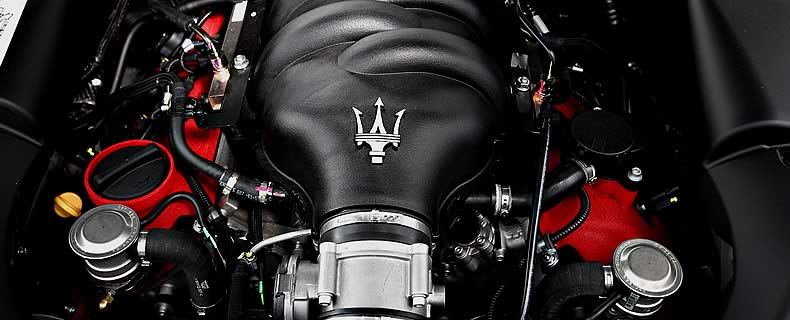
Engine
systemSchematic diagram of an injector from an electronic fuel injection systemFuel Injector - enlarge
Today, there are many drivers who never drove a vehicle that didn't have electronic fuel injection. Carburetors, what are they? Likewise, they never had to warm up an engine, flooded an engine or used a choke. Electronic fuel injection, which is celebrating its 40th birthday, virtually eliminated these, and many other problems as well as give us cleaner air.
As point of history, Bosch's D-Jetronic was the world's first electronically controlled gasoline injection system installed into a production car. It was first use in the 1967 Volkswagen 1600 LE/TLE. The big objective of EFI was to clean up exhaust emissions to meet more stringent smog regulations starting with those implemented by California's Clean Air Act in 1967. By 1972, only five years after introduction, 18 manufacturers were using the Bosch technology in mass production vehicles.
While today's EFI systems are much more trouble-free, especially compared to the carburetors, mechanical fuel injection and throttle body injection that preceded them, they can still give problems. The most common is fuel deposits on injector tips that alters the injection pattern and fuel flow volume. Symptoms of this problem include stalling, hesitating, hard starting, power loss and reduced mpgs.
One way to prevent injector deposits is to
drive frequently and for longer distances. Injectors are
designed to spray a
fine mist of fuel through tiny holes in their tips. When the
engine is shut off, some fuel remains, which because of the
very high engine temperature, can evaporated leaving gum-like
deposits. This changes the ideal conical spray pattern to an
irregular one or even reduce fuel volume causing drivability
problems. This is more likely to occur when you drive on only
short trips. Therefore, an "Italian Tuneup," that
is driving pedal-to-metal for an extended period, can often
clean up injectors and solve the problem.
A professional injector cleaner uses a solventAn injector cleaner
uses a solvent and high pressure to clean fuel injectorsFuel
Injector Cleaner - enlarge
Gasoline producers advertise their "detergent" fuels with additives to prevent deposits as well as clean them up. Do they work? It depends on the brand and vehicle because refiners use different types and amounts. Thus, if you suspect a dirty injector problem, and it isn't the result of infrequent driving, fill up with a different brand. It may take a couple of fill ups to clean up deposits before you see a difference. Incidentally, since now all brand name gasoline grades contain detergents, there is benefit to purchasing premium grade fuel if your vehicle doesn't require it.
How about those bottles of fuel injector cleaners you find on shelves of auto parts stores and gasoline stations? Do you need them? Probably not, if you use a name brand gasoline that contains detergent additives. However, they may help with older vehicles with fuel injected engines that were driven on non-detergent gasoline for a long time. It may worth a try before removing injectors for replacement -- expensive -- or professional injector cleaning either on or off the engine -- somewhat less expensive.
Replacing the fuel-filter annually is probably less investment than a couple of bottles of off-the-shelve injector cleaners. While a clean filter will not prevent or cure injector problems, it will prevent dirt and other junk from clogging up the fuel system.
By Bill Siuru, PhD, PE
Replacing the spark plugs are key part of a tune-up. Indeed, in modern vehicles with electronic fuel injection and electronic ignition systems, it may be the only procedure in a "tune-up." If your "CHECK ENGINE" light comes on, and an engine diagnosis indicates a "misfire", changing plugs is the first, and cheapest, place to start.
New spark plugs are pretty inexpensive, and unlike ones on older vehicles, can go many tens of thousands of miles before they should be replaced. Add to this the difficulty getting to spark plugs in today's engines, it is best to replace them, rather than clean and re-gap like in the old days.
Before removing sparks plugs, clean out any dirt or debris around the base of the plug that might fall into the combustion chamber and do damage to the engine. If available, use compressed air. If not, you can blow out the crud using a drinking straw or a small length of hose or tubing. Make sure to wear goggles to protect your eyes.
If the plugs have not been removed for a long time you might find one or two that are a bit tough to loosen. Allowing the engine to cool down often helps especially with aluminum cylinder heads. You might also soak the plug base with penetrating oil.
Using the correct size spark plug wrench, apply a steady pressure rather than jerky hammering to remove a stubborn plug. Be careful not to apply too much torque or too much impact force. You can shear off the top of the plug or strip the threads resulting in some real problems.
If the spark plug is especially difficult to screw out by hand after it is loose, carbon might have collected in the threads in the cylinder head. This condition is more common in older engines. The threads should be cleaned with a thread chaser before installing the new plug. The seat should be cleaned to insure good seat contact when you reinstall the plug.
Inspect each plug to detect any engine problems. They should have no more than a light gray or golden brown coating. Oil-soaked or sooty plugs are an indication of more serious mechanical problems such as a faulty fuel injection system or worn piston rings.
When replacing plugs you might consider precious metal spark plugs, for example platinum. While more expensive, they can go 50,000 miles or more before the next replacement. They are just the ticket for engines where a couple of the plugs are very difficult to get to.
Before installing new plugs, check the electrode gap to see if it is within specifications. The specs can be found in the owner's manual or on later models on the decal usually located on the underside of the hood. Use a wire-type spark plug gap-measuring tool.
If you use a bit of anti-seize compound, on the threads the plugs will be much easier to remove next time. It also ensures proper tightening and helps transfer heat between the engine and plug. If you have plugs with a sealing washer type gasket, make sure it is on the plug. Also make sure the old gasket did not get left in the spark plug port.
Install the new plug by hand until finger tight. They should screw in easily. If not, it might be cross-threaded which will definitely strip the threads in the cylinder head. Aluminum heads strip very easily.
Once the plug is finger tight, use a torque wrench to complete the job. Torque to the recommended amount according to the specifications.
It is good idea to remove and replace one plug at a time to preclude mixing up the spark plug wires. Otherwise mark the wires using tape unless it very obvious which wire goes to which plug.
You probably heard the urban legend about the motorist who put tape over a glowing LOW OIL light, then turned up the radio to drown out the knocking rod bearings. Those dials, warning lights and LED messages on your dash provide important information that can save you the cost of a big repair, if heeded promptly.
When you start your vehicle, all the warning lights should glow for a few seconds. Make sure they come on and if not, find out why and make necessary repairs. Otherwise, you won’t get a warning about a problem. If a light continues to glow for more than a minute or so, there is a problem that needs attention.
If while driving, a red light starts glowing, pull over, stop and turn off the engine immediately! Don’t try to restart the engine until the source of the problem is found and repaired. Indeed, if a light comes on for low oil pressure or overheating, it may be too late and permanent damage may already have occurred. A light for low battery voltage may be the result of an accessory belt failure that could lead to other problems, or a dead battery. A brake warning light is, of course, a safety issue.
Most vehicles now have a CHECK ENGINE light. When it comes on, it could mean a whole lot of things, and probably will take a technician to decipher why. However, there are a couple of instances that I experienced that were quite simple to correct. If the CHECK ENGINE comes on immediately after refueling, check to make sure the filler cap is tightly secured. Today, caps are closely monitored as part of the emission control system and a loose or missing cap will result in a warning. Also if you have disconnected the battery cables or had a completely dead battery, the light might glow while the computer is reprogrammed. Drive for a few miles and it should go out.
Oh yes, read your owner manual. It may provide clues, and solutions, for CHECK ENGINE situations.
If the CHECK ENGINE light comes on and there are other symptoms like hard starting, engine missing, strange odors, new sounds or poor performance, there is bigger problem that needs attention. Also you will not be able to pass a smog test with the CHECK ENGINE light glowing.
Since 1996, in some cases as early as 1994, all vehicles
have been equipped OBD II (On-Board Diagnostic II) systems.
Earlier ones used a less sophisticated OBD I system. OBD-II
provides almost complete engine control and also monitors
parts of the chassis, body and accessory devices, as well
as the diagnostic control network of the vehicle. OBD-II
provides a universal inspection and diagnosis method to be
sure the vehicle is performing up to original equipment manufacturer
(OEM) standards. If not, usually the CHECK ENGINE will come
on.
The data provided by OBD-II system can often pinpoint the
specific component that has malfunctioned, saving substantial
time and cost compared to guess-and-replace repairs. You
might consider purchasing a OBD II Scanner so you can read
the trouble codes, just like the technician, when the CHECK
ENGINE light comes on. They now cost under $200. You might
not be able to fix the problem, but it would be nice if you
could drive the vehicle without further problems, or have
to call a tow truck. Bring the scanner with you when checking
out a potential used car purchase. Also while you might not
be able to make a repair diagnosis with the scanner, you
will be able to relate the problem to a service writer or
mechanic saving repair cost or even prevent getting taken.






